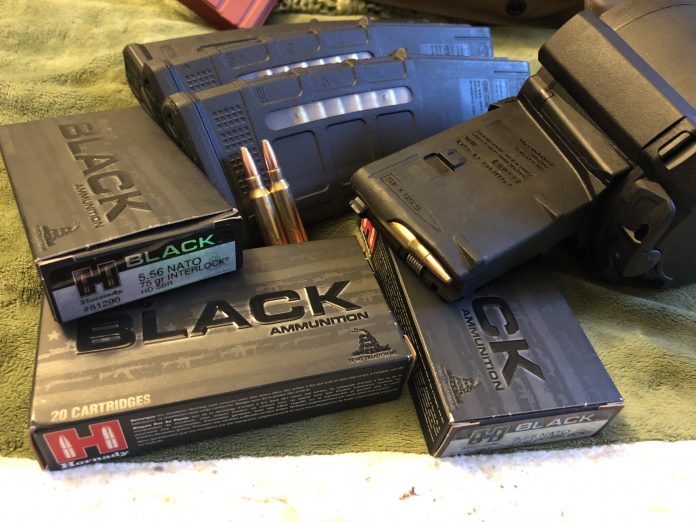
What is your choice when it comes to self defense rifle ammunition? Why?
Was it handed to you at a gun store? The guy or gal recommended it from behind the counter and you took their offered suggestion. Do they have the knowledge base necessary to know?
As with all things, seek the greater knowledge base and make an informed decision.
For 9mm, both handgun and carbine, I use 124gr and up hollow point ammunition. I’ve used Hornady’s Critical Duty, Sig Sauer’s JHP’s, and my personal preference is Federal HSP’s in the 147gr variety.
Why? There is enough data from multiple sources saying the ammo will do as I ask it too… probably.
All ammunition is a gamble! Remember that.
It’s hoping that the myriad of crazy situational and environmental factors align in such a way that the round performs as advertised it will when it was shot in a controlled environment.
All considered, for general use I would recommend the following. Please note these are ammunition types that can be met by several brands and deal with 5.56/.223
Soft Point or OTM 69-77gr – Mk. 262, Hornady SBR HD, Black Hills OTM, etc. Heavier rounds at high velocity will deal well terminally and usually consistently, all things considered. They have less trouble with intermediate barriers but don’t pose a tremendous over penetration threat either. These also tend to perform well out of shorter barrel platforms with 1:7 and 1:8 rifling twists, increasingly popular defensive carbines. They have excellent performance out of conventional barrel lengths of 14.5″-20″ which result in higher velocities and better terminal effects.
Speed is the .223/5.56’s greatest wounding effect. Choose a rifle accordingly. The downside to these ammunition choices is generally cost/availability.
While I don’t recommend putting a price limit on your life, that doesn’t change the amount sitting in anyone person’s checking account. These rounds aren’t inexpensive and they won’t be on as many shelves in quantity where they are available. Shop online for the best prices but be prepared to buy in bulk to do so.
M193 – Dropping to a 55gr steals almost 1/3rd of the mass available to a 5.56/.223 round. This isn’t ideal but it is, economically and availability wise, easier to sustain. M193 clone loads of 55gr FMJ lead core projectiles are readily available and easily bought for under .30 cents a round at present. Terminally these rounds frag to a high degree when encountering a target and that makes them useful. This is especially true close to the target.
A caution though. Be aware of ALL of the known effects of the ammunition you choose. M193 is a good round, and available, but when used on intermediate barriers it really likes to frag. It practically explodes when it hits vehicle glass, not just deflecting. This requires a shooter to adapt their engagement to what their round is going to do and be even more ready to change target area or fire follow up shots to get a positive effect on target.
More data below from Sage Dynamics.
Regardless of the ro und you choose, understand what it is going to do.
For instance, I recommend against M855/SS109 if you can get M193 instead. The M855’s mild steel core and construction alters the wounding and penetration capabilities (especially considering over penetration) further from ideal defensively. Yes it is a proven lethal round. Yes it is a NATO military round. And yes it can defeat certain classes of armor by design. But how likely are you to face an armored opposition that has armor vulnerable to M855 but not M193? Compare that to a likely unarmored threat needing a more general engagement in an environment where M855 may be a greater liability. There’s a reason officers don’t load patrol rifles with M855 and that the construction of Mk. 318 and M855A1 is so drastically different from M855.
At the end of the day a loaded rifle trumps an empty one in a fight, load Wolf/Tula if you have to. But have a care for your tools and their capabilities and plan your loadout to effect.



